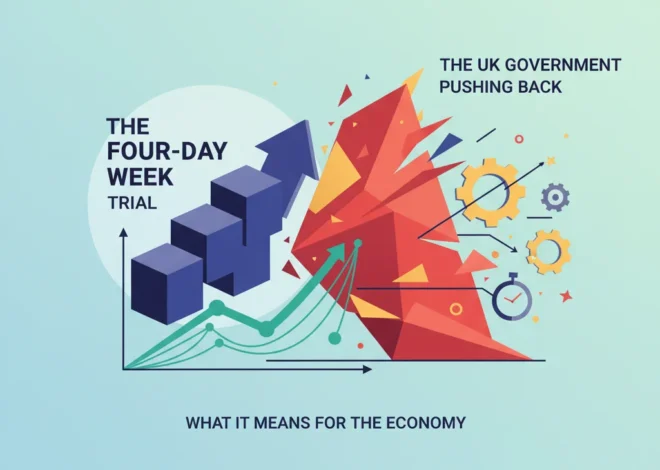
Pentagon’s Shake-Up: What a New Era of Defense Competition Means for Your Portfolio
In a move sending ripples across the financial and defense sectors, the Pentagon has signaled a significant overhaul of its contracting process. The U.S. Defence Secretary recently announced new measures aimed at dismantling the status quo and injecting a heavy dose of competition into a market long dominated by a handful of colossal firms. This isn’t merely a bureaucratic reshuffle; it’s a strategic pivot with profound implications for national security, the global economy, and, crucially, for investors navigating the complex world of defense investing.
For decades, the defense industry has been characterized by its concentration. A few “prime contractors” have enjoyed a seemingly unshakeable hold on the lion’s share of the Pentagon’s colossal budget. But this new directive, as reported by outlets like the Financial Times, serves as a clear warning shot. The message is simple: the era of comfortable, low-competition contracts may be drawing to a close. The Pentagon is actively looking to court innovation, speed, and efficiency by opening its doors to a wider array of suppliers. For business leaders, finance professionals, and anyone with a stake in the stock market, understanding the depth of this shift is paramount.
The Iron Giants: A Look at the Concentrated Defense Landscape
To grasp the magnitude of this change, one must first understand the current structure of the U.S. defense industrial base. Following a wave of consolidation after the Cold War, the industry coalesced around five dominant players, often referred to as the “Big Five.” These companies—Lockheed Martin, Raytheon (RTX), Northrop Grumman, Boeing, and General Dynamics—have become synonymous with American military might, responsible for everything from fighter jets and nuclear submarines to missile defense systems and satellites.
Their dominance is staggering. In fiscal year 2022, the top five contractors alone were awarded over $196 billion in Pentagon contracts, representing a significant portion of the total defense budget (source). This concentration has created a stable, predictable environment for these firms and their shareholders, but critics argue it has also led to stifled innovation, cost overruns, and a sluggish response to rapidly evolving geopolitical threats.
The following table provides a snapshot of these defense titans, illustrating their immense scale and market influence as of early 2024.
| Company | Ticker Symbol | Market Capitalization (Approx.) | Notable Platforms & Specialties |
|---|---|---|---|
| Lockheed Martin | LMT | $112 Billion | F-35 Lightning II, Black Hawk Helicopters, Aegis Combat System |
| Raytheon (RTX) | RTX | $135 Billion | Tomahawk Missiles, Patriot Air Defense, Pratt & Whitney Engines |
| Northrop Grumman | NOC | $68 Billion | B-21 Raider Stealth Bomber, James Webb Space Telescope, Drones |
| Boeing (Defense, Space & Security) | BA | $125 Billion (Total Co.) | F/A-18 Super Hornet, KC-46 Tanker, Apache Helicopters |
| General Dynamics | GD | $78 Billion | Abrams Tanks, Virginia-class Submarines, Gulfstream Jets |
This entrenched system, often called the “military-industrial complex,” creates incredibly high barriers to entry. Smaller, more agile companies with potentially groundbreaking technology often find themselves locked out, unable to navigate the labyrinthine procurement process or compete with the lobbying power of the giants. It is this very system that the Pentagon now aims to disrupt.
Nvidia's Trillion-Dollar Handshake: Decoding the AI Megadeals with Asia's Tech Titans
The Pentagon’s New Playbook: What Does “More Competition” Mean?
The announcement is more than just rhetoric; it signals a multi-pronged strategy to reshape the defense market. While specific policies are still being rolled out, the core objectives are clear. The measures are likely to include:
- Unbundling Contracts: Breaking up massive, winner-take-all contracts into smaller, more manageable pieces. This would allow smaller firms to bid on specific components, such as software, sensors, or cybersecurity modules, rather than being shut out of an entire multi-billion dollar platform.
- Prioritizing Commercial Tech: A renewed focus on adapting existing commercial technologies for military use. This is faster and cheaper than developing bespoke systems from scratch and opens the door to non-traditional players from the tech sector.
- Streamlining Procurement: Leveraging financial technology (fintech) and new acquisition authorities to slash the red tape that prevents startups from working with the government. The notoriously slow payment cycles and complex compliance rules are a major deterrent for small businesses, an area where blockchain-based solutions for supply chain and payment verification could eventually play a transformative role.
- Intellectual Property (IP) Rights Reform: The government is increasingly seeking to own or have greater access to the IP and data rights of the systems it funds. This prevents vendor lock-in, where a contractor has a monopoly on maintaining, upgrading, and servicing a platform for its entire lifecycle, a major source of long-term revenue for the primes (source).
This strategic shift is a direct response to the changing nature of warfare, which is becoming more reliant on data, software, and networks than on sheer tonnage of steel. The goal is to build a more resilient, dynamic, and innovative industrial base capable of outpacing strategic competitors.
The Financial Fallout: An Investor’s Guide to the New Defense Economy
For those involved in finance and trading, this policy pivot creates both risks and opportunities. The stable, dividend-paying stocks of the major defense contractors have long been considered safe havens, but this new environment introduces a new set of variables.
Impact on the Defense Giants
It’s premature to predict the demise of the Big Five. Their deep integration with the military, massive infrastructure, and expertise in large-scale systems integration are irreplaceable. However, they face significant headwinds. Increased competition will likely squeeze profit margins on new contracts. They will be forced to compete more fiercely on price and innovation, and their highly profitable aftermarket and sustainment revenue could be threatened if the Pentagon successfully breaks up their monopolies on parts and services.
The smart giants will adapt by becoming more aggressive in their M&A strategies, acquiring the very startups and tech firms that threaten to disrupt them. Their role may shift from being the sole creators of technology to being the master integrators of a diverse ecosystem of suppliers.
The Rise of the Disruptors
The real winners in this new landscape will be the agile, tech-forward companies that can provide innovative solutions quickly. Investors should be looking at several key areas:
- Software & AI Firms: Companies specializing in artificial intelligence, data analytics, and autonomous systems are poised for explosive growth as the military prioritizes “JADC2” (Joint All-Domain Command and Control).
- Cybersecurity: As defense systems become more networked, they become more vulnerable. Demand for cutting-edge cybersecurity solutions will be insatiable.
- Space & Satellite Tech: Commercial space companies offering launch services, satellite imagery, and communications are becoming integral to national security.
- Advanced Manufacturing: Firms specializing in 3D printing, advanced materials, and rapid prototyping can help accelerate development and deployment cycles.
This shift creates a new paradigm for investing in the defense sector. The focus moves from a few blue-chip stocks to a broader, more dynamic portfolio that includes high-growth tech companies that may not look like traditional defense contractors at all.
Is Ethereum Coiling for a ,000 Rally? A Deep Dive into the Bull Flag Formation
Beyond the Stock Market: Broader Economic and Technological Implications
The impact of this reform extends far beyond Wall Street. A more competitive defense market could act as a powerful engine for the broader U.S. economy. By spreading contracts across a larger number of smaller firms, it can foster job growth in new regions and technology hubs, rather than concentrating it in a few established areas. This decentralization is a key principle in modern economics, promoting resilience and reducing systemic risk.
Furthermore, this initiative could accelerate a “spin-on” effect, where technologies developed in the commercial sector are rapidly adapted for military use. This is the reverse of the old “spin-off” model (like GPS or the internet) and is crucial for keeping pace with global innovation. The integration of advanced financial technology into the government’s banking and payment systems for contractors could also create a more efficient and transparent public-private financial ecosystem. A recent study by the Stimson Center highlights how reforming the Pentagon’s budgeting and procurement processes is critical for enabling this kind of technological agility.
Beyond the Bus Stop: Analyzing the Economic Fallout of the UK's Youth Transport Decision
Conclusion: A New Battlefield for Innovation and Investment
The Pentagon’s declaration to foster greater competition is a watershed moment for the defense industry and the investors who watch it. It marks a fundamental recognition that the future of national security depends less on the size of a contractor’s balance sheet and more on the speed and creativity of its ideas. For the established giants, this is a call to adapt or risk being outmaneuvered. For a new generation of innovators, it is an unprecedented opportunity to enter a market that was once all but closed.
For the savvy investor, the landscape is becoming more complex but also richer with opportunity. The strategy is no longer simply buying and holding the biggest names. It’s about identifying the disruptors, understanding the underlying technological trends, and recognizing that the battle for the future of defense will be fought and won in the labs, coding rooms, and venture capital offices that are building tomorrow’s arsenal today.


